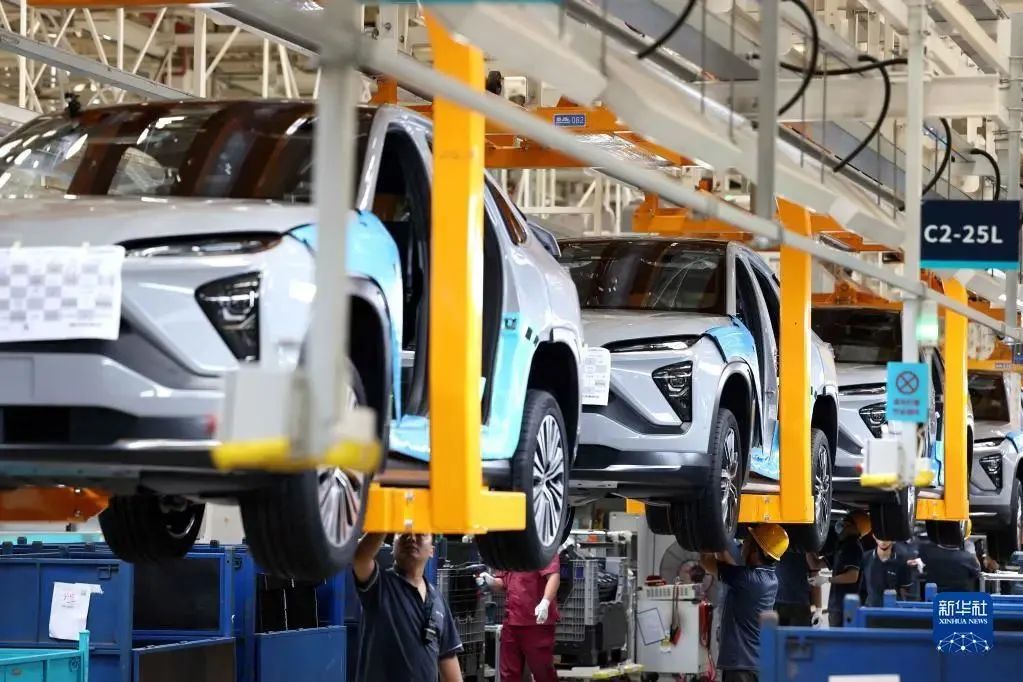
English | 中文

Review the Progress of China's "30·60" Goal in 2022
source:goldencsr date:2023-01-16 15:37:52During the "14th Five-Year Plan" period, China's ecological civilization has entered a critical period with carbon reduction as strategic direction. China aims to synergize the reduction of pollution and carbon emissions and pursues all-round and greener economic and social development. This period is also the critical period and window period for carbon peaking. In 2022, during this critical period, the national and local governments actively promoted the decarbonization work in various fields, improved top-level design and implemented safeguard measures. Many hot spots such as decarbonization technologies, products and services were emerged. The constantly appeared new carbon peak and carbon neutrality policy, updated figures, and emerging excellent practices… They all witnessed the innovation and efforts we have made to promote the decarbonization in the past year, and also left a brilliant and notable achievement.
Figures are the most visual reflection of actions. In this issue of "carbon neutrality action", we selected top 10 typical and significant figures from various public reports on decarbonization. The purpose is to recreate those memorable and conic moments of decarbonization in 2022 and encourage related efforts continue to move on in 2023.
1
Decline in 5 consecutive years

According to the China's Policies and Actions for Addressing Climate Change (2022) issued by the Ministry of Ecology and Environment, China 's carbon dioxide emissions per 10,000 yuan of GDP continued to decline from 2017 to 2021. By the end of 2019, China achieved its 2020 climate action target ahead of schedule. China's carbon dioxide emissions per unit of GDP in 2021 was 3.8% lower than that in 2020, and 50.8% lower than that in 2005 cumulatively. (Data source: Ministry of Ecology and Environment)
2
10 billion yuan

In 2022, the total trading volume of carbon emission allowances (CEA) in the national carbon trading market exceeded 50.889 million tons, with total turnover of 2.814 billion yuan. By the end of 2022, the total trading volume of CEA in the national carbon market exceeded 229 million tons, and the total turnover exceeded 10 billion yuan, making it the world’s largest carbon spot market. (Data source: Shanghai Environment and Energy Exchange)
3
6.5%

From 2016 to 2021, China National Intellectual Property Administration authorized 160,000 pieces of patents, including 6.5% of the average growth of green low-carbon patents per year. The fastest average annual growth was in the hydrogen energy field, reaching 20.5%. China contributed more than three quarters of the patents authorization growth in global hydrogen energy and power-saving technology. (Data source: China National Intellectual Property Administration)
4
50%

From January to November 2022, China's new energy passenger vehicles (NEV) accounted for 63% of the world's new energy vehicles, including 66% of the world's new energy vehicles in November. By the end of 2022, the country’s NEV fleet reached 13.1 million, including 10.99 million in the first eight months, accounting for half of the world’s total. (Data source: Ministry of Public Security and China Passenger Car Association)
5
839 million tons

In the past ten years, China's forest area has increased by 7.1%, reaching 227 million hectares. China is becoming the main force of global "greening"; the forest carbon sink increased by 7.3%, reaching 839 million tons of carbon dioxide equivalent per year, equivalent to offsetting China’s one-year automobile carbon emissions. (Data source: Released by the Publicity Department of the CPC Central Committee on September 15, 2022)
6
2 billion ㎡

By the first half of 2022, the proportion of new green building area in China has exceeded 90% of new buildings. The national new green building area has increased from 4 million ㎡ in 2012 to 2 billion ㎡ in 2021. (Data source: Ministry of Housing and Urban-Rural Development)
7
1.1 TWh

Up to 2022, China’s installed capacity for renewable energy has exceeded 1.1 TWh, accounting for more than 34% of the world’s total. Its generation capacity of hydropower, wind power, solar power and biomass tops in the world, and sets several world highs. (Data source: National Development and Reform Commission)
8
2,783 national green factories

By 2022, China has built 2,783 national green factories, 223 national green industrial parks, and 296 demonstration enterprises of national green supply chain management, covering the main industries. A green manufacturing system has initially formed. (Data source: Ministry of Industry and Information Technology)
9
303 A-share enterprises

By August 24, 2022, 303 A-share enterprises have disclosed their 2021 carbon emissions data, with the highest disclosure rate in the financial and telecommunication industries. 48 listed financial enterprises disclosed their 2021 carbon emissions data, with a median carbon emission intensity of 0.53 tons of carbon dioxide equivalent per million yuan of revenue. (Data source: Wind)
10
6 million+ green travels

By mid-October 2022, Beijing Mobility as a Service (MaaS) Platform, the first integrated travel service platform in China, has had served over 30 million users for over 6 million green travels daily. The total carbon reduction generated is over 240,000 tons, equivalent to the carbon emission reduction of 120,000 fuel vehicles stopped driving for 1 year. (Data source: Beijing Municipal Commission of Transport)